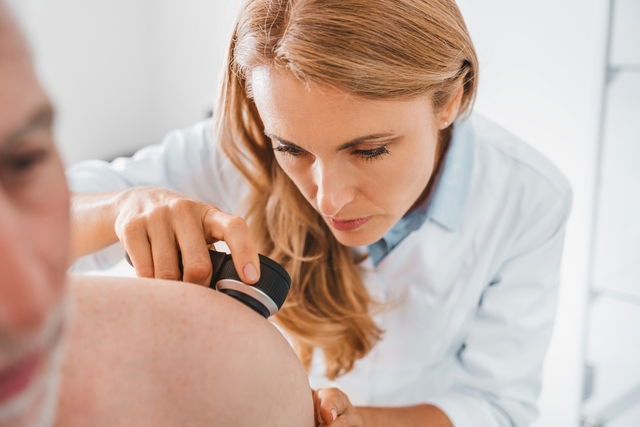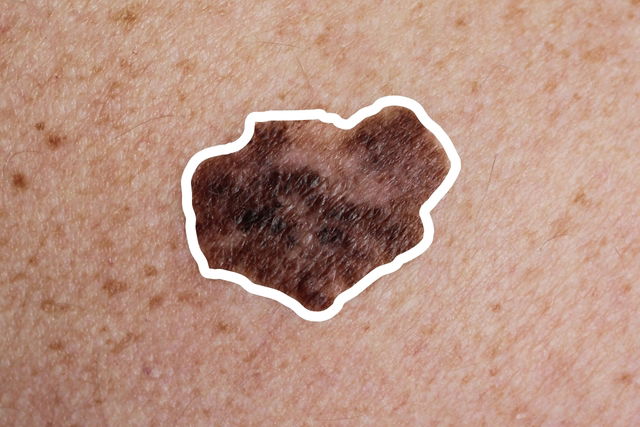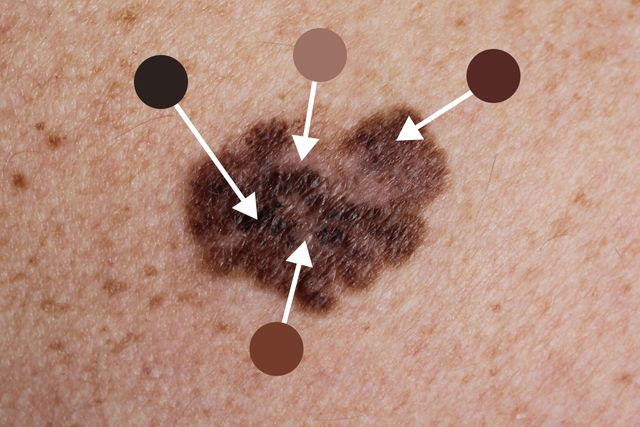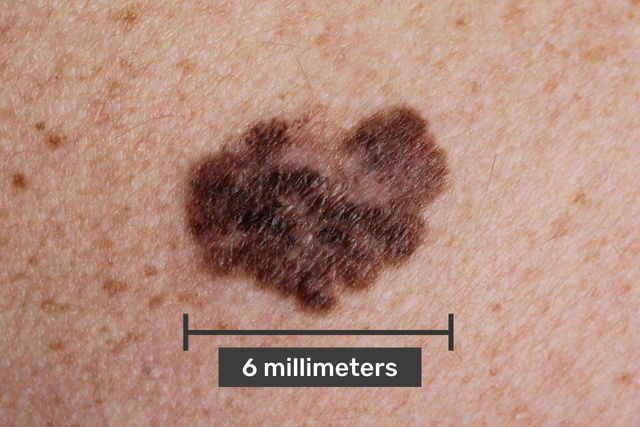Melanoma is characterized by a cancerous lesions on the skin that are asymmetrical and have irregular edges and different colors. They generally have a diameter greater than 6 millimeters and increase in size over time. These lesions can be identified using the ABCDE method (asymmetry, borders, colors, diameter and evolution).
Knowing how to identify melanoma on the skin early is the best way to ensure successful treatment. This can prevent skin cancer from developing and creating metastases that are difficult to eliminate, even with treatment.
Even if you take measures like applying sunscreen or avoiding the hottest hours of the day, it is very important to evaluate the skin at least once a month, including on the scalp and the soles of the feet, to identify whether there are new or different moles that could be a sign of cancer.

Melanoma signs and symptoms
One of the best ways to assess whether a mole could be melanoma is by assessing its characteristics using an acronym known as ABCDE. If the spot has more than two of these characteristics, you are advised to consult a dermatologist.
A - Asymmetry

Generally, moles that are most likely to be malignant are asymmetrical. If you were t draw an imaginary line down the middle of a malignant mole, the two parts would not be similar.
Most normal moles are symmetrical and, therefore, are not a sign of alarm, but it is important to know that there are also benign moles that can be asymmetrical. Therefore, if you notice any mole is asymmetrical, it should be evaluated by a dermatologist.
B - Borders

A mole with regular, smooth edges is usually benign and does not present as a health hazard. Moles with irregular and poorly marked edges may be a sign of skin cancer.
C - Color

Normal moles without risk of cancer generally have a brown color, without major variations in shades. Melanoma lesions, however, will usually present with darker colors or even a mixture of several colors, such as black, blue, red or white.
D - Diameter

A melanoma spot is usually greater than 6 millimeters in diameter. Therefore, if you have mole that is larger than your other ones, it is very important to consult a dermatologist, even if it is symmetrical, normal in color and has regular edges.
Malignant signs can also grow over time, starting as a small mole, and can increase until it becomes a spot measuring more than 6 mm.
E - Evolution
The evolution of the spot on the skin is also important to help identify melanoma on the skin.
This evolution can be characterized by an increase in the size of the spot, lesion or mole on the skin over time, or changes in its color or shape over time.
Furthermore, the spot, mole or lesion on the skin can also evolve and present other signs, such as itching or bleeding.
Other symptoms of skin cancer
Although the best way to identify a possible melanoma is to observe the spot on the skin, some people may experience other symptoms, such as:
- Burning sensation
- Frequent itching
- Bleeding
These symptoms appear exactly at the location of the spot, but can also spread to a few centimeters around it.
In addition to melanoma on the skin, there are other types of melanoma, which can be more difficult to detect, as they are found in more hidden places, such as melanomas under the nail, in the mouth, digestive tract, urinary tract or in the eye. These also require prompt treatment.
Confirming a diagnosis
To confirm the diagnosis of melanoma or another type of skin cancer, it is very important to consult a dermatologist to assess the characteristics of the spot.
If cancer is suspected, the doctor may recommend performing a small local surgery to remove the spot. After that, the removed tissue is sent to the laboratory to evaluate whether there are cancer cells present within it.
If cancer cells are detected, the doctor may recommend removing more skin around the area where the spot was, or starting other treatments, such as chemotherapy or radiotherapy, for example, depending on the degree of cancer development.
